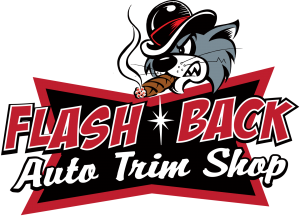It is only fair that we discuss some of the differences between chrome plating and stainless polishing. When we set up our vendor booth at automotive events, based on comments, discussion, and questions from the public, there still seems to be plenty of confusion between the two. Chrome plating or chrome restoration, versus stainless steel polishing and stainless restoration are two totally separate processes involving different materials. Although we have excellent chrome platers that we have worked with in the past we can offer their service, but plating is not an in-house process at Flash Back.
Most of our customers requiring chrome are looking for the ‘old school’ chrome or Hexavalent Bright Chrome. Sometimes referred to as ‘Hex’ Chrome, hexavalent can be done in a single stage (flashing), or (triple plated) which involves copper, nickel, and lastly, the chrome. Chroming is an electrochemical process done in vats involving different baths and requires very strict guidelines and EPA standards making it quite expensive. Old worn out, sun bleached, pitted, or damaged chrome parts which require re-plating must be chemically stripped to the base metal, repairs addressed if needed, then re-plated. In some cases copper can be applied in layers and used as a primer, filling in some minor imperfections and flaws. Along with bumpers, various ornamental and trim parts were sometimes cast and chrome plated. These are usually thick or heavy in nature and can be identified as castings by pin marks where they were released from molds. They may also contain a part number, year of manufacture, or a maker’s mark cast legibly on the back side. These castings are made from pot metal (typically zinc) which is a brittle, porous metal requiring some type of plating for anti-corrosive protection. Prior to about 1925, the industry standard for plating automobile parts was done mostly with nickel, and thereafter, chrome. Since plating is basically a shell, once damaged or compromised, one is left with basically only a single option, re-plating. Unlike stainless steel, aluminum, or brass for instance, with which one can manipulate the actual material of origin and polish it back to a lustrous finish.
It can be difficult to distinguish a stainless part from a chrome piece, but there are distinct differences. A visual test would reveal that when placed side by side, polished stainless will have a brighter silvery hue, opposed to chrome having a much deeper blue hue or even appearing purplish in color. Also stainless parts are stamped from a thin gauge material making them much lighter, and chrome pieces were typically heavy cast. There are some rare exceptions where stainless trim parts or hubcaps were flashed with a very thin layer of chrome. There seems to be no definitive reason for this type of flashing other than a precise color match of an entire trim package on some particular vehicles, or anti-corrosive reassurance.
The majority of automotive trim pieces, however, were typically stamped from a No. 8 mirror finish stainless or in some cases anodized aluminum. The most commonly used type of Stainless Steel used in automotive trim is a 400 series (430 to be specific) which is of the Ferritic family of Stainless Steels. This is a nickel free stainless with a varying chromium content of 12% to 18%. The 430 stainless was used because it was less expensive than the Austenitic 300 series, had fair corrosion resistance, and was easily formed and cut. Some reasons why it is so restorable is because it can be welded with some care, has a superior resistance to stress corrosion cracking, and has good workability and formability characteristics. This series of Ferritic Stainless Steel is also magnetic, unlike Austenitic Stainless Steels (300 series). So a good rule of thumb is if a trim piece is non-magnetic, it is more likely to be aluminum or plated pot metal. If you’re still not sure, send your part to us, and let us make the determination.
